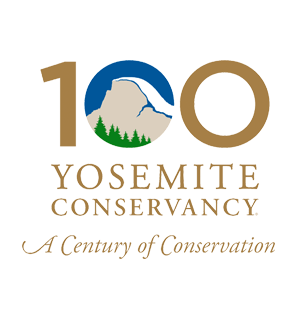To protect access for other hikers and preserve the quality of the John Muir Trail, Yosemite National Park has an exit quota for those planning to exit the park via Donohue Pass.
Hiking the John Muir Trail
The John Muir Trail is 211 miles long, stretching from Yosemite Valley to the summit of Mount Whitney.
Key Considerations
The John Muir Trail ranges in elevation from 4,000 feet to 14,000 feet. The time of year you embark on your journey plays a large factor in what you may encounter while on trail. On average snow years, the John Muir Trail is in good condition from July through September. If you are planning a long-distance hike, it is your responsibility to prepare for seasonal risks and challenges.
Early Season
Depending on the time of year, at lower elevation, spring and summer conditions can be in full swing. As you gain elevation, you’ll encounter more winter conditions, well into July some years.
➡️ In May, snow coverage on the trail may be up to 100%.
➡️ In early June, you will typically encounter 60% to 80% snow coverage on the trail.
➡️ In addition to route finding through snow, you may also encounter high creeks and dangerous snow bridge crossings.
Late Season
As the months goes on and summer comes to a close, days can be clear and sunny, nighttime temperatures can be well below freezing.
➡️ There are increased occurrences of thunderstorms and chances of early season snowstorms. At lower elevations, these thunderstorms may not be menacing, but once at higher altitudes, these storms can keep you from crossing mountain passes or even moving forward along trail.
➡️ October storms can bring several inches of snow, blanketing the landscape and trail altogether. Travel during this time requires excellent navigation skills and the ability to traverse difficult terrain.
➡️ Many seasonal water sources may have dried up. Many resupply points may be closed or difficult to access.
Planning Resources
As the months goes on and summer comes to a close, days can be clear and sunny, nighttime temperatures can be well below freezing.
➡️ Reference the current weather forecasts in Yosemite.
➡️ Check wilderness conditions.
➡️ Research JMT resupply locations.
➡️ Review seasonal operation dates prior to your trip.
Trailheads
There are only two trailheads that allow hikers to exit Yosemite via Donohue Pass.
Need to Know
➡️ The quota for exiting Donohue Pass is 45 people per day.
➡️ If you plan to hike the John Muir Trail as a continuous hike, beginning in Yosemite National Park (SOBO), you only need one wilderness permit from Yosemite for the entire trip.
➡️ If you are beginning outside Yosemite National Park (NOBO), and planning to end your trip in Yosemite, you need a permit for the agency that manages your trailhead.
